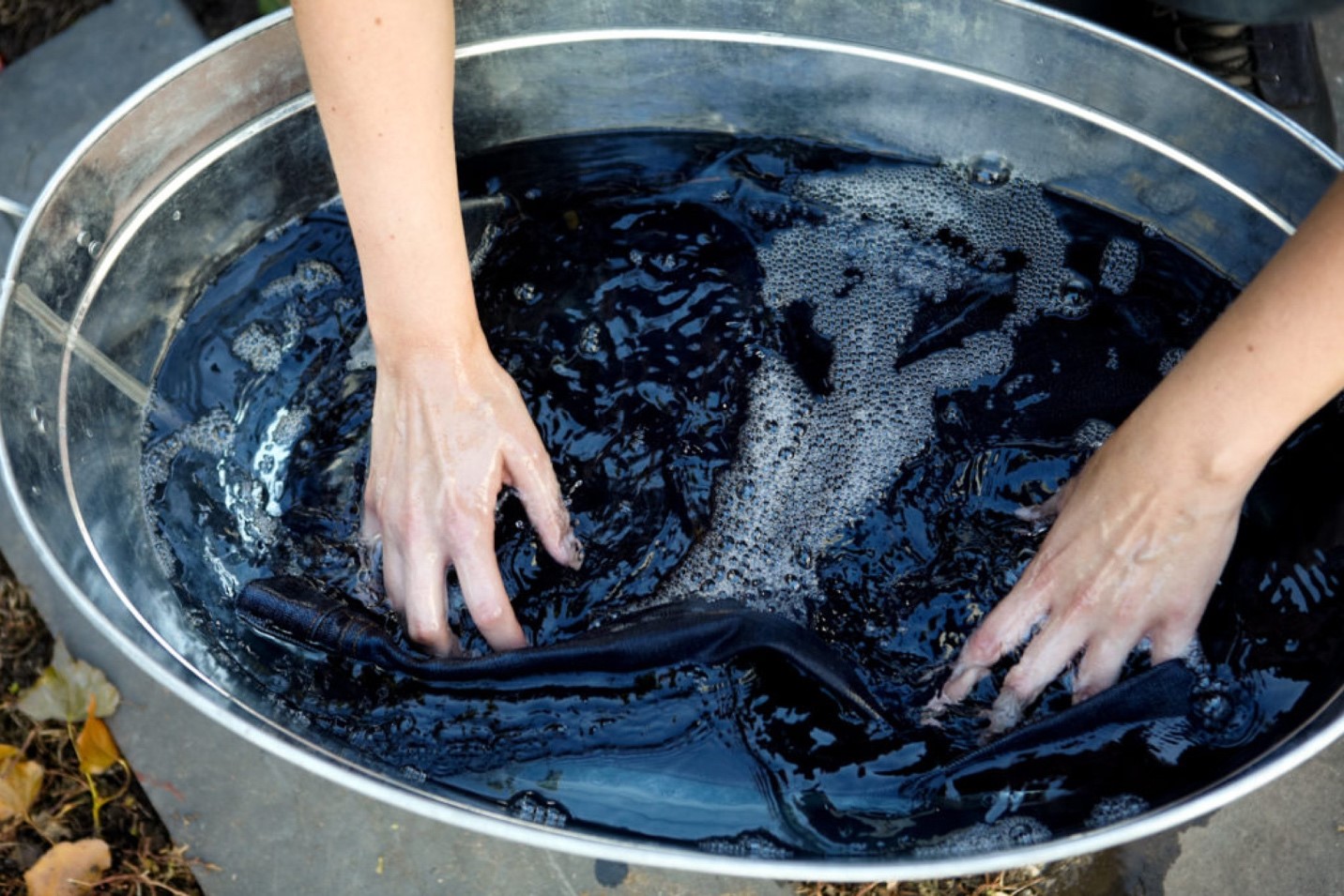Redefining Dirty: The How, What, and Why of the Sustainable Wash Less / Wear More Philosophy
According to recent estimates, from the cradle (soil and seeds) to the grave (recycling), each pair of denim consumes a staggering 3,781 litres of fresh water.
According to recent estimates, from the cradle (soil and seeds) to the grave (recycling), each pair of denim consumes a staggering 3,781 litres of fresh water. This kind of footprint raises legitimate concerns about the sustainability of denim production, and denim producers have taken steps to curb their water usage, but there is only so much that mills and brands can do. For denim to become a truly sustainable fashion choice, consumers must close the sustainability loop, adding their own efforts to the ongoing work of cotton farmers, mills, and denim brands. If we want to make a truly impactful fashion choice, we can do this by choosing to wear our jeans more and wash them less. The average consumer wears their jeans only two or three times between washes. This is far more washing than is jeans need, and, rather than extending the life of our jeans, we’re rushing them to the end of their lifecycle. The wear more/wash less philosophy has been gathering steam in recent years. Today, we’ll be looking at some of the frequently asked questions surrounding this approach.
Am I Washing My Jeans Too Often?
If you’re washing your pair every time you wear them, the answer is an unequivocal yes. If you’re wearing them a few times in between washes, the answer is still yes. Denim is a robust fabric that can handle just about anything that you can throw at it. It doesn’t need to be pampered like silk or cashmere. Treat it like the workwear it is. Even if you’ve been working up a sweat in your jeans, they likely still don’t need to be thrown in the wash. Just hang them up overnight and they’ll be fresh as daisies when you wake up in the morning. Get out of the habit of peeling your jeans off and throwing them straight in the hamper. Instead, hang them on a hook or throw them over the back of a chair. Washing your jeans after every few wears might make you feel more secure about the cleanliness of your clothes, but it’s hard on your denim, and it’s a massive waste of water (few things take up as much room in the wash as a pair of jeans). Wash them less and you’ll be saving water, and your jeans will last much longer to boot!
When Should I Wash My Jeans?
The answer to this is quite simple: Wash your jeans when they are actually dirty. The difficulty comes when you try to define dirty. For some people, anything that has been worn counts as dirty; for others, a pair of jeans aren’t ready for the wash until they can’t be worn in polite company. The best course is somewhere between these two extremes. If you spill a bit of food on your jeans, you can usually wipe it off with a damp cloth or simply brush it off. If you spill a lot of food or something that might be a breeding ground for bacteria (beer for example), throw them in the wash. Until they’re well and truly dirty, leave them be.
Won’t My Jeans Smell If I Don’t Wash Them?
Josh Le, a Canadian student, recently wore a pair for 15 months without washing them. He then swabbed the pair and sent that swab to the lab, testing for bacteria and fecal matter. He then washed the pair and wore them for two weeks and performed the same test. The results were nearly identical. The jeans weren’t swarming with bacteria. Yes, they were dirty, and no, they probably couldn’t pass the sniff test, but the extra year and then some of daily wear didn’t make much of a difference in terms of measurable bacteria levels. The sniff test remains the most reliable guide we have. If you can smell your jeans, try hanging them up overnight outside. If the smell persists, you might want to try turning them inside out and hanging them in direct sunlight for a few hours. If this doesn’t do the trick, it’s definitely time to give them a bath.
How Often Should I Wash My Jeans?
There are some denim enthusiasts (Chip Bergh, President and CEO of Levi’s, being one of these) who argue that the best wash policy is to never let your jeans see the inside of a washing machine. When they get dirty, a bit of spot cleaning or, when this won’t do the trick, a quick hand-wash in a bucket with a bit of soap will get them back in showroom condition. Some take this to extremes by keeping their jean entirely dry for their entire lifecycle. I’m not one of these, and I don’t recommend this policy for anybody, but there are plenty of people whose jeans only get wet when it rains. This is undeniably the most-sustainable approach, but it’s not for everybody. A good rule of thumb is to wash your jeans about once a month, but this assumes that you’re wearing the same pair every day. If you rotate through five or six pairs of jeans, just get out of the habit of throwing them in the hamper at all. Give all of your pairs a wash a few times a year, with your favourite pair getting perhaps a few more baths than the other ones. If you’re keeping track of wear count between washes, try to push the number north of fifty or even further (you might be surprised how high you can push it).
''Calik Denim’s Washpro Technology makes their denims an ideal choice for those who want to push their wear count between washes as high as it can possibly go. Both the yarn and the fabric have been specially treated, resulting in a denim that is effectively self-cleaning. Washpro Technology gives the treated denims antibacterial and even antiviral properties, which means your jeans will look and smell clean for much longer. Sustainable solutions like these are allowing denim lovers to confidently wear their jeans for weeks or even months on end. ''
How Should I Wash My Jeans?
Even if you start relatively small with something like washing your jeans every second week instead of every week, you’re still cutting your per pair water post-purchase water consumption in half. If you want to push it further than this, the following washing strategies will help you keep your water consumption to a minimum while still getting your jeans thoroughly clean. Hand Wash 1) Fill a bucket or the sink with lukewarm water (or cold if you want to keep your energy consumption to a minimum). 2) Add a small amount of detergent to the water (substantially less than you would use in a full load). Agitate the water to dissolve the soap. 3) Turn your jeans inside out. 4) Submerge your jeans in the water and leave them to soak for 15-20 minutes. 5) If the jeans are particularly dirty, work the soapy water into the denim in the problem areas with your hands. 6) Drain the water out of the bucket or sink and squeeze the jeans (don’t wring them) to get the soapy water out of the denim. 7) Rinse the jeans with cold water and, once again, squeeze the water out of them. 8) Hang them to dry.

**Photo by Scarlet Chamberlin Styling Co** Machine Wash 1) Turn your jeans inside out. 2) Use your machine’s coldest setting (unless you want them to shrink) 3) Turn off the spin cycle (this is what produces those unwanted vertical streaks, especially in dark denim). 4) Let the machine do its thing. 5) Remove the jeans as soon as the machine is finished and hang them somewhere to drip dry. Lather, rinse, and repeat as little as possible and you’ll be doing your part to make the denim industry more sustainable.
To view full content and a better mobile experience, try



